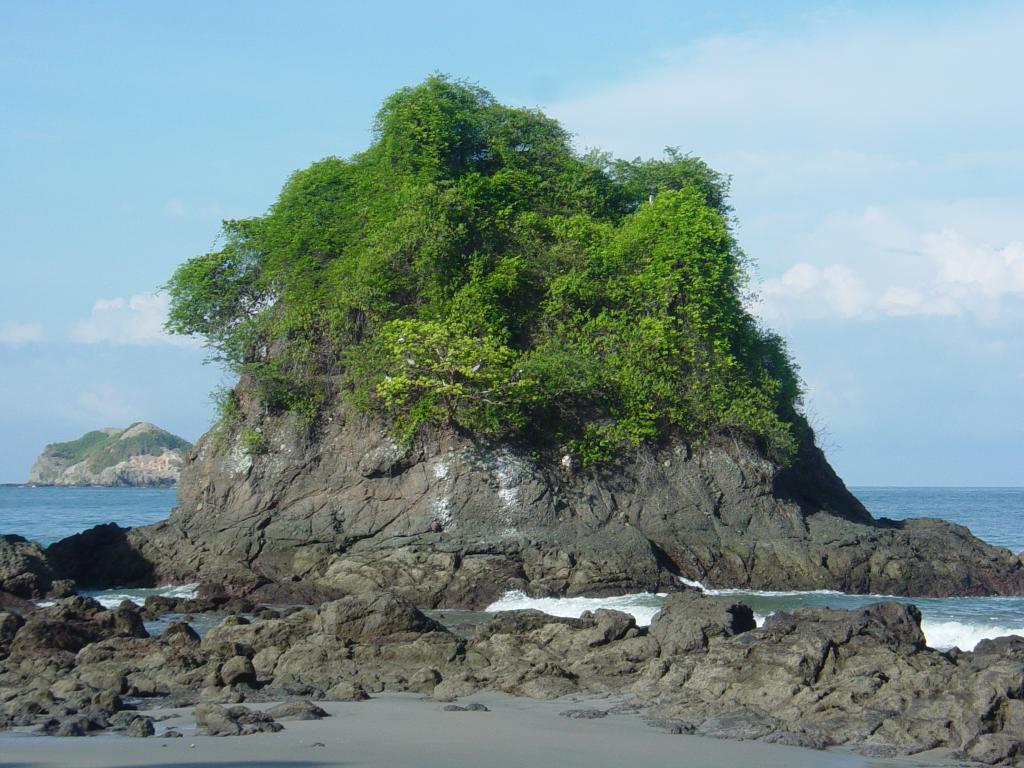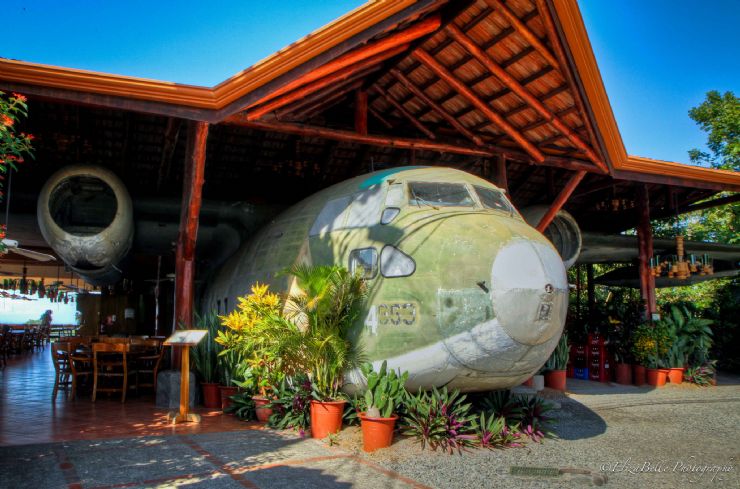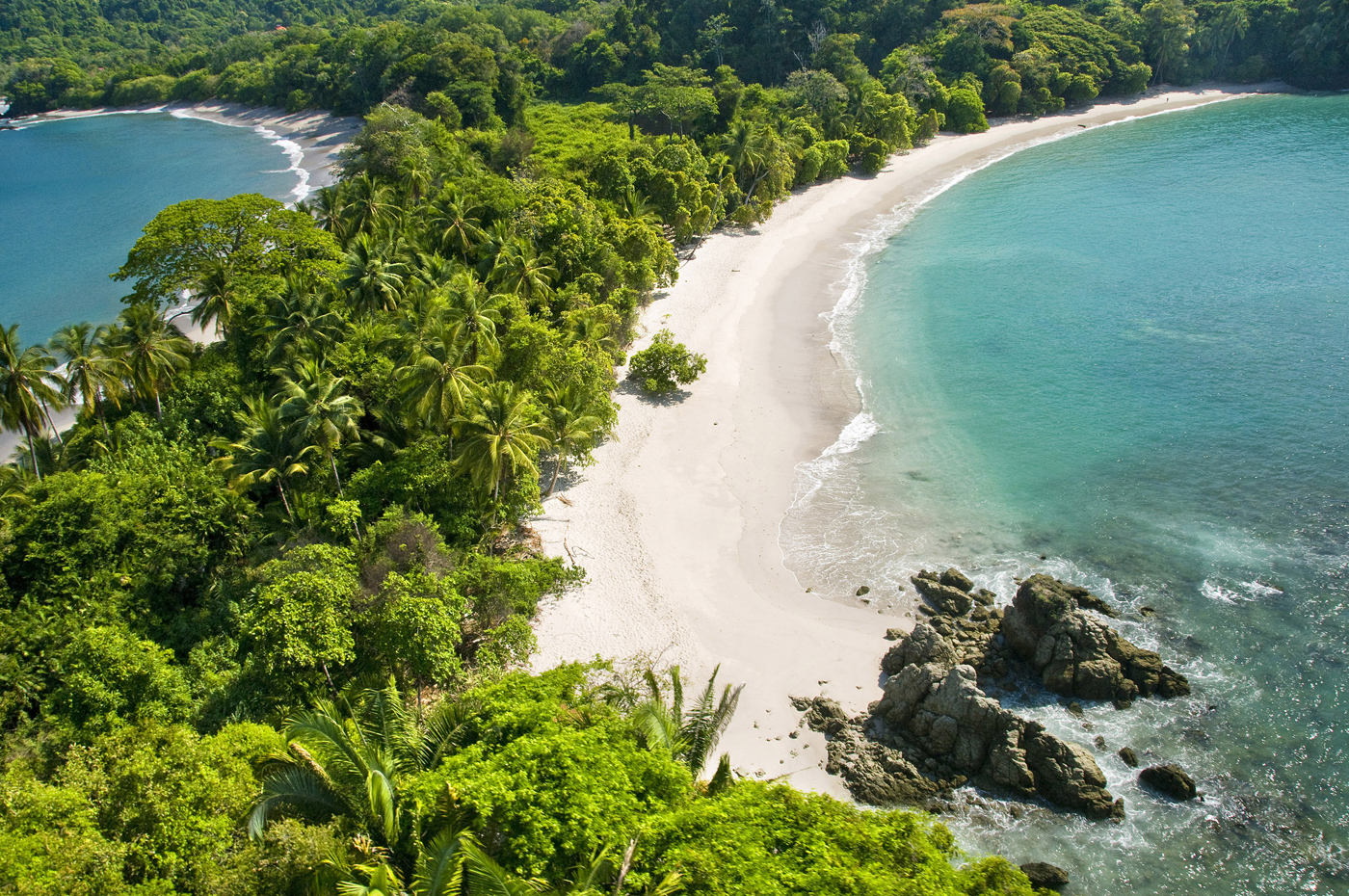Costa Rica Travel News – Tropical sandy beaches lined with rocky shores and steep cliffs. Teeming wildlife, including three different species of monkeys (mantled howler, squirrel, capuchin), iguanas, snakes, bats and even the occasional migrating whale. And then there are the tourists, featuring just as much diversity as the pristine rainforest they can be found traversing.
 To think it was just a breath away from being destroyed for a coastal development project.
To think it was just a breath away from being destroyed for a coastal development project.
Small with Big Gifts
Costa Rica is rightfully celebrated for its national parks. Manuel Antonio warrants this acclaim and then some. Dedicated in 1972, the park has since enlarged itself to 16 square kilometers. Though this makes it the smallest national park in the country, it clocks in as the second most visited, behind Poás Volcano National Park.
My wife Melanie and I spent our honeymoon here this past New Year’s Eve, staying (as a wedding gift) at the jaw-droppingly stunning La Mariposa Hotel perched alongside the Pacific Ocean. This meant sunsets so colorful they earned a round of applause from admiring guests.
La Mariposa is one of countless hotels off the winding and narrow ruta 618, just a hair over three kilometers from Quepos — the transportation terminal of the region. Free shuttle service meant easy access to the region’s storybook beaches, but hiking the road was an equally popular option for those traveling without children.
Before visiting the park, we hit the public beach in Playa Espadilla, which was just as well-maintained and appealing as any of the four beaches within the national park. Vacationing foreigners and ticos could be seen dotting the shore. Adventurers parasailing, adults and families all had a place at Espadilla.
Manuel Antonio
Only a few blocks away from Playa Espadilla, Manuel Antonio National Park offers easy access with a plethora of hiking trails and beaches to explore.
Admission is $16 U.S. per adult entrance, which seems steep but is well worth it. Nationals pay a substantially lower fee.
Bird watchers were already out in full force with their guides and comically large telescopes by the time we reached the park entrance at 8 a.m., clearly eager to see as many of the estimated 350 species as possible. A few guides made a modest effort at offering their services (though we declined, these guides truly have remarkable eagle eyes, as we had previously experienced on a rewarding tour in Cahuita National Park along the Caribbean coast).
With approximately 16 kilometers’ worth of trails, hiking comes as a highly recommended option for spending a day in the park, plus a way of weeding yourself out from the crowds. The initial trails, wide and flat enough for vehicular travel, were dominated by the aforementioned avian enthusiasts. Sendero Perezoso (Sloth Trail), indeed.
An out-and-back option sprouted off the main route to an underwhelming waterfall overlook, and another was a boardwalk trail that inevitably bottlenecked with beach-bum traffic.
Both trails eventually come to an unavoidable junction, where you can ditch the crowds by turning left and taking on some actual hiking trails that will leave your healthy heart pounding behind your sweaty shirt. There were two very lightly populated beaches welcoming those willing to put up with a bit more effort. The way they appeared suddenly through the dense rainforest reminded me of the idyllic setting in The Beach (minus the Thai drug lords).
Capuchin, known for their white faces, and squirrel monkeys were in large numbers, swinging from tree to tree like in a children’s book. Howler monkeys could be heard emitting their terrifying cry far from afar. Had we not been in a well-established national park, I might have been just a tad more terrified.
Unfortunately when it came to the monkeys, some tourists left us disappointed. Only those with vision impairments have an excuse for missing the ubiquitous signs reading, “No alimente a los animales,” or “Don’t feed the animals.” Considering how well some of these tourists were able to spot the monkeys and call them over with food in hand, I suspect their vision was just fine and that simple human idiocy was the problem.
alimente a los animales,” or “Don’t feed the animals.” Considering how well some of these tourists were able to spot the monkeys and call them over with food in hand, I suspect their vision was just fine and that simple human idiocy was the problem.
By the end of the day we had hiked almost every stretch of manicured trail within the dense rainforest of Manuel Antonio, and our legs most certainly felt it by dinner time at El Avión.
El Avión
You know when you’ve reached El Avión, because there’s a Fairchild C-123 aircraft sitting alongside the road as casually as a parked car. This is the twin sister of the infamous C-123 shot down over Nicaragua by the Sandinista army in 1986.
In 2000, the proprietors of El Avión purchased for $3,000 the Central Intelligence Agency’s second aircraft that had been abandoned at the international airport. They converted it to the bar and restaurant we know today.
Within the hull of the aircraft, where you can enjoy an icy cold Imperial and watch college football, children and certain adults who have maintained their childlike wonderment could climb into the cockpit. Cheeky signs, like the “Contra Bar,” make light of the establishment’s shady backstory.
Joe Baur , Special for USA TODAY

